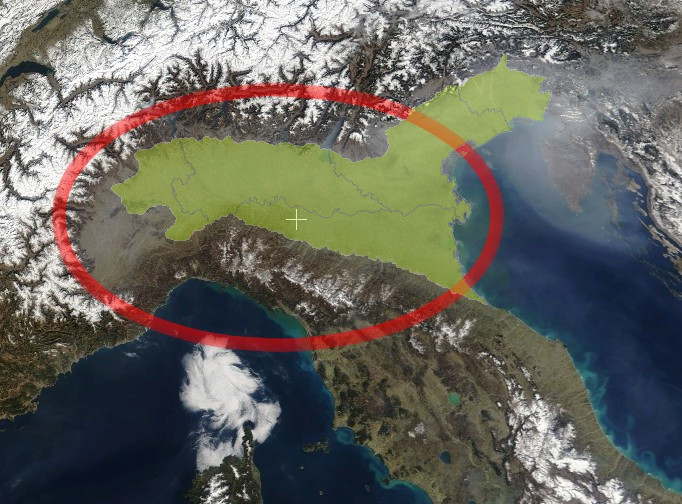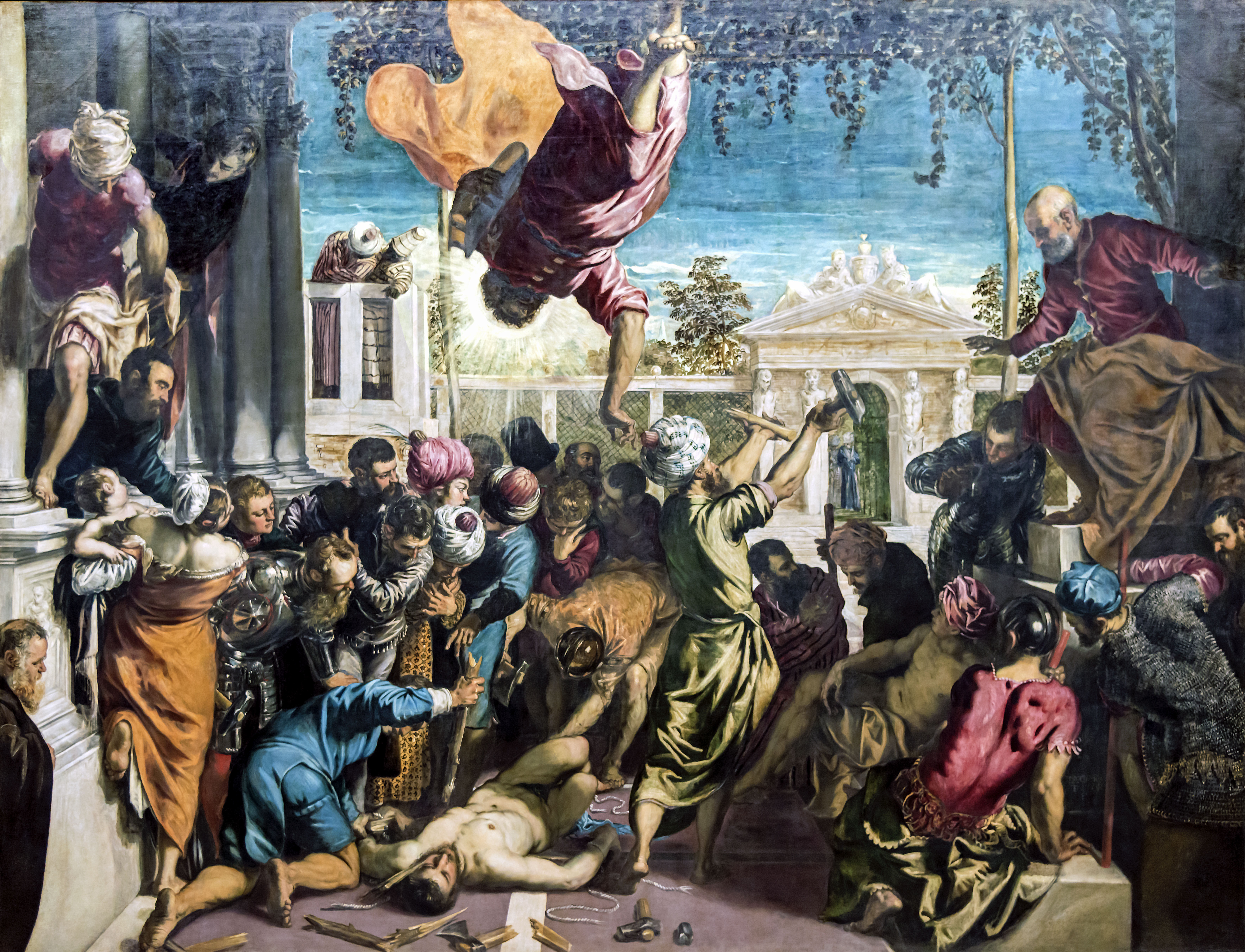|
Pax Romana
The Pax Romana (Latin for 'Roman peace') is a roughly 200-year-long timespan of Roman history which is identified as a period and as a golden age of increased as well as sustained Roman imperialism, relative peace and order, prosperous stability, hegemonial power, and regional expansion, despite several revolts and wars, and continuing competition with Parthia. It is traditionally dated as commencing from the accession of Augustus, founder of the Roman principate, in 27 BC and concluding in 180 AD with the death of Marcus Aurelius, the last of the "Five Good Emperors". Since it was inaugurated by Augustus at the end of the final war of the Roman Republic, it is sometimes also called the Pax Augusta. During this period of about two centuries, the Roman Empire achieved its greatest territorial extent and its population reached a maximum of up to 70 million people. According to Cassius Dio, the dictatorial reign of Commodus, later followed by the Year of the Five Emperors and the ... [...More Info...] [...Related Items...] OR: [Wikipedia] [Google] [Baidu] |
Latin
Latin (, or , ) is a classical language belonging to the Italic branch of the Indo-European languages. Latin was originally a dialect spoken in the lower Tiber area (then known as Latium) around present-day Rome, but through the power of the Roman Republic it became the dominant language in the Italian region and subsequently throughout the Roman Empire. Even after the fall of Western Rome, Latin remained the common language of international communication, science, scholarship and academia in Europe until well into the 18th century, when other regional vernaculars (including its own descendants, the Romance languages) supplanted it in common academic and political usage, and it eventually became a dead language in the modern linguistic definition. Latin is a highly inflected language, with three distinct genders (masculine, feminine, and neuter), six or seven noun cases (nominative, accusative, genitive, dative, ablative, and vocative), five declensions, four ... [...More Info...] [...Related Items...] OR: [Wikipedia] [Google] [Baidu] |
Commodus
Commodus (; 31 August 161 – 31 December 192) was a Roman emperor who ruled from 177 to 192. He served jointly with his father Marcus Aurelius from 176 until the latter's death in 180, and thereafter he reigned alone until his assassination. His reign is commonly thought of as marking the end of a golden period of peace in the history of the Roman Empire, known as the Pax Romana. Commodus accompanied his father during the Marcomannic Wars in 172, and on a tour of the Eastern provinces in 176. Later that year he became the youngest emperor and consul up to that point, at the age of 15. During his solo reign, the Roman Empire enjoyed reduced military conflict compared with the reign of Marcus Aurelius. Intrigues and conspiracies abounded, leading Commodus to revert to an increasingly dictatorial style of leadership, culminating in his creating a deific personality cult, with his performing as a gladiator in the Colosseum. Throughout his reign, Commodus entrusted the manag ... [...More Info...] [...Related Items...] OR: [Wikipedia] [Google] [Baidu] |
North Africa
North Africa, or Northern Africa is a region encompassing the northern portion of the African continent. There is no singularly accepted scope for the region, and it is sometimes defined as stretching from the Atlantic shores of Mauritania in the west, to Egypt's Suez Canal. Varying sources limit it to the countries of Algeria, Libya, Morocco, and Tunisia, a region that was known by the French during colonial times as "''Afrique du Nord''" and is known by Arabs as the Maghreb ("West", ''The western part of Arab World''). The United Nations definition includes Morocco, Algeria, Tunisia, Libya, Egypt, Sudan, and the Western Sahara, the territory disputed between Morocco and the Sahrawi Republic. The African Union definition includes the Western Sahara and Mauritania but not Sudan. When used in the term Middle East and North Africa ( MENA), it often refers only to the countries of the Maghreb. North Africa includes the Spanish cities of Ceuta and Melilla, and plazas de so ... [...More Info...] [...Related Items...] OR: [Wikipedia] [Google] [Baidu] |
Iberian Peninsula
The Iberian Peninsula (), ** * Aragonese and Occitan: ''Peninsula Iberica'' ** ** * french: Péninsule Ibérique * mwl, Península Eibérica * eu, Iberiar penintsula also known as Iberia, is a peninsula in southwestern Europe, defining the westernmost edge of Eurasia. It is principally divided between Spain and Portugal, comprising most of their territory, as well as a small area of Southern France, Andorra, and Gibraltar. With an area of approximately , and a population of roughly 53 million, it is the second largest European peninsula by area, after the Scandinavian Peninsula. Name Greek name The word ''Iberia'' is a noun adapted from the Latin word "Hiberia" originating in the Ancient Greek word Ἰβηρία ('), used by Greek geographers under the rule of the Roman Empire to refer to what is known today in English as the Iberian Peninsula. At that time, the name did not describe a single geographical entity or a distinct population; the same name was ... [...More Info...] [...Related Items...] OR: [Wikipedia] [Google] [Baidu] |
Po Valley
The Po Valley, Po Plain, Plain of the Po, or Padan Plain ( it, Pianura Padana , or ''Val Padana'') is a major geographical feature of Northern Italy. It extends approximately in an east-west direction, with an area of including its Venetic extension not actually related to the Po river basin; it runs from the Western Alps to the Adriatic Sea. The flatlands of Veneto and Friuli are often considered apart since they do not drain into the Po, but they effectively combine into an unbroken plain, making it the largest in Southern Europe. It has a population of 17 million, or a third of Italy's total population. The plain is the surface of an in-filled system of ancient canyons (the "Apennine Foredeep") extending from the Apennines in the south to the Alps in the north, including the northern Adriatic. In addition to the Po and its affluents, the contemporary surface may be considered to include the Savio, Lamone and Reno to the south, and the Adige, Brenta, Piave and Ta ... [...More Info...] [...Related Items...] OR: [Wikipedia] [Google] [Baidu] |
Sicily
(man) it, Siciliana (woman) , population_note = , population_blank1_title = , population_blank1 = , demographics_type1 = Ethnicity , demographics1_footnotes = , demographics1_title1 = Sicilian , demographics1_info1 = 98% , demographics1_title2 = , demographics1_info2 = , demographics1_title3 = , demographics1_info3 = , timezone1 = CET , utc_offset1 = +1 , timezone1_DST = CEST , utc_offset1_DST = +2 , postal_code_type = , postal_code = , area_code_type = ISO 3166 code , area_code = IT-82 , blank_name_sec1 = GDP (nominal) , blank_info_sec1 = €89.2 billion (2018) , blank1_name_sec1 = GDP per capita , blank1_info_sec1 ... [...More Info...] [...Related Items...] OR: [Wikipedia] [Google] [Baidu] |
Mediterranean Basin
In biogeography, the Mediterranean Basin (; also known as the Mediterranean Region or sometimes Mediterranea) is the region of lands around the Mediterranean Sea that have mostly a Mediterranean climate, with mild to cool, rainy winters and warm to hot, dry summers, which supports characteristic Mediterranean forests, woodlands, and scrub vegetation. Geography The Mediterranean Basin covers portions of three continents: Europe, Africa, and Asia. It is distinct from the drainage basin, which extends much further south and north due to major rivers ending in the Mediterranean Sea, such as the Nile and Rhône. Conversely, the Mediterranean Basin includes regions not in the drainage basin. It has a varied and contrasting topography. The Mediterranean Region offers an ever-changing landscape of high mountains, rocky shores, impenetrable scrub, semi-arid steppes, coastal wetlands, sandy beaches and a myriad islands of various shapes and sizes dotted amidst the clear blue sea. Co ... [...More Info...] [...Related Items...] OR: [Wikipedia] [Google] [Baidu] |
Roman Republic
The Roman Republic ( la, Res publica Romana ) was a form of government of Rome and the era of the classical Roman civilization when it was run through public representation of the Roman people. Beginning with the overthrow of the Roman Kingdom (traditionally dated to 509 BC) and ending in 27 BC with the establishment of the Roman Empire, Rome's control rapidly expanded during this period—from the city's immediate surroundings to hegemony over the entire Mediterranean world. Roman society under the Republic was primarily a cultural mix of Latin and Etruscan societies, as well as of Sabine, Oscan, and Greek cultural elements, which is especially visible in the Roman Pantheon. Its political organization developed, at around the same time as direct democracy in Ancient Greece, with collective and annual magistracies, overseen by a senate. The top magistrates were the two consuls, who had an extensive range of executive, legislative, judicial, military, and religious powe ... [...More Info...] [...Related Items...] OR: [Wikipedia] [Google] [Baidu] |
The Cambridge Ancient History
''The Cambridge Ancient History'' is a multi-volume work of ancient history from Prehistory to Late Antiquity, published by Cambridge University Press. The first series, consisting of 12 volumes, was planned in 1919 by Irish historian J. B. Bury and published between 1924 and 1939, co-edited by Frank Adcock and Stanley Arthur Cook. The second series was published between 1970 and 2005, consisting of 14 volumes in 19 books. ''The Cambridge Ancient History'' is part of a larger series of works, along with '' The Cambridge Medieval History'' and '' The Cambridge Modern History'', intended to cover the entire history of European civilisation. In the original edition, it was the last in this series to appear, the first volume of the ''Modern History'' having been published in 1902, and the first volume of the ''Medieval History'' in 1911. In the second series, however, the ''Ancient History'' began to be published before the ''Medieval History''. Second series Volumes published * ... [...More Info...] [...Related Items...] OR: [Wikipedia] [Google] [Baidu] |
Walter Goffart
Walter Goffart (born February 22, 1934) is a German-born American historian who specializes in Late Antiquity and the European Middle Ages. He taught for many years in the History Department and Centre for Medieval Studies of the University of Toronto (1960–1999), and is currently a senior research scholar at Yale University. He is the author of monographs on a ninth-century forgery (''Le Mans Forgeries''), late Roman taxation (''Caput and Colonate''), four "barbarian" historians, and historical atlases. Two controversial themes in his research concern the Roman policies used when settling barbarian soldiers in the West Roman Empire (''Barbarians and Romans'' and the sixth chapter of ''Barbarian Tides''), and his criticism of the old idea that there was a single Germanic people opposed to the empire in late antiquity, which he believes still influences academics studying the period. Early life Walter Goffart was born in Berlin on February 22, 1934, the son of Francis-Leo Goffar ... [...More Info...] [...Related Items...] OR: [Wikipedia] [Google] [Baidu] |
Miracle
A miracle is an event that is inexplicable by natural or scientific lawsOne dictionary define"Miracle"as: "A surprising and welcome event that is not explicable by natural or scientific laws and is therefore considered to be the work of a divine agency." and accordingly gets attributed to some supernatural or praeternatural cause. Various religions often attribute a phenomenon characterized as miraculous to the actions of a supernatural being, (especially) a deity, a magician, a miracle worker, a saint, or a religious leader. Informally, English-speakers often use the word ''miracle'' to characterise any beneficial event that is statistically unlikely but not contrary to the laws of nature, such as surviving a natural disaster, or simply a "wonderful" occurrence, regardless of likelihood (e.g. "the miracle of childbirth"). Some coincidences may be seen as miracles. A true miracle would, by definition, be a non-natural phenomenon, leading many writers to dismiss miracles ... [...More Info...] [...Related Items...] OR: [Wikipedia] [Google] [Baidu] |





.png)


